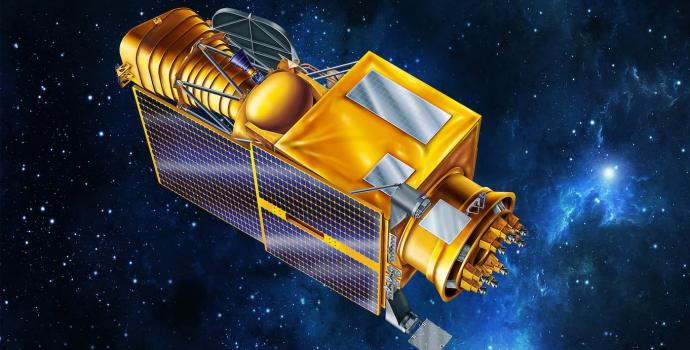
NASA has announced that it will partner with the Israel Space Agency and the Weizmann Institute of Science to launch Israel's first space telescope mission, the Ultraviolet Transient Astronomy Satellite (ULTRASAT), in early 2026. ULTRASAT is an ultraviolet observatory designed to investigate the secrets of short-duration events in the universe, such as supernova explosions and mergers of neutron stars. The project is an international effort, with NASA participating in the mission's science program and providing launch services. ULTRASAT's wide field of view will enable it to capture ultraviolet light from sources that change on short timescales, conducting the first wide-field survey of transient and variable ultraviolet sources, revolutionizing our understanding of the hot transient universe.
ULTRASAT: An Ultraviolet Observatory to Study Short-Duration Events in the Universe
ULTRASAT's broad scientific impact spans across various fields, including Gravitational Wave sources, supernovae, variable and flare stars, active galactic nuclei, tidal disruption events, compact objects, and galaxies. Among its primary goals are to constrain the physics of GW sources and collect early UV light curves of hundreds of core-collapse supernovae to chart how massive stars impact their environment through mass loss and explosion.
The spacecraft is being constructed by the Israeli Aerospace Industry, with funding and management from the Israel Space Agency, the Weizmann Institute of Science, and DESY, under the scientific leadership of the WIS. If successful, ULTRASAT will demonstrate that groundbreaking science can be achieved by small satellites at an affordable cost, leading the way to future similar missions. The partnership between NASA and the Israel Space Agency will enable the global science community to gain new insights into the workings of the universe.
ULTRASAT Vs James Webb Space Telescope (JWST)
ULTRASAT and JWST use different observing wavelengths, with ULTRASAT focusing on ultraviolet light and JWST focusing on infrared light. This means that they will be able to capture different types of information about the universe. Additionally, ULTRASAT will be placed in geostationary orbit, while JWST is placed in orbit around the Earth-Sun L2 point, which is about 1.5 million kilometers away from Earth.
Despite their differences, both telescopes will make significant contributions to our understanding of the universe and help answer some of the most profound questions about our origins and place in the cosmos.
But what does this mean for the future of astronomy?
ULTRASAT's unique capabilities in monitoring the UV sky with high temporal resolution and a wide field-of-view will greatly increase our understanding of transient astrophysical events, such as supernovae, gamma-ray bursts, and tidal disruption events. With its ability to detect over 100 supernovae per year and provide early alerts, ULTRASAT has the potential to revolutionize our understanding of the evolution of massive stars and their environments. Additionally, ULTRASAT's observations may lead to the discovery of planetary transits and assist in the study of black holes and active galactic nuclei. ULTRASAT will not only pave the way for new discoveries but also contribute to answering fundamental questions about the universe, such as the origin of heavy elements and the expansion rate of the universe. The future of astronomy is exciting, and ULTRASAT will be at the forefront of new discoveries.



0 Comments